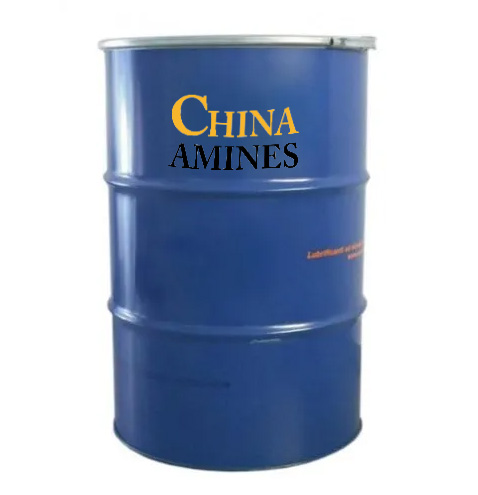Your Questions and Comments
Your sales and customer service desk partners within China Amines Co will continue to serve you. You can also contact us via our headquarter office-
Email:info@chinaamines.com
China Amines Co
Product Profile
1. Chemical Structure and Properties
Molecular Formula: CH₅N
Structural Formula: CH₃NH₂
A primary aliphatic amine consisting of a methyl group bonded to an amino group.
Physical Properties:
- State: Colorless gas at room temperature; stored as a 40% aqueous solution (~49°C boiling point).
- Density: 0.70 g/cm³ (liquid); Vapor Pressure: 400 kPa at 20°C.
- Solubility: Fully miscible with water, ethanol, and ether; forms hydrates.
Chemical Properties:
- Basicity: Weak base (pKa = 10.6), reacts vigorously with acids to form salts.
- Reactivity: Alkylation, acylation, and condensation; autoignites at 430°C.
2. Industrial Applications
Agrochemicals:
- Intermediate in glyphosate and neonicotinoid synthesis.
Pharmaceuticals:
- Precursor for antitussives and antidepressants.
Rubber Industry:
- Used in vulcanization accelerator production.
Surfactants:
- Precursor for cocamidopropyl betaine.
Electronics:
- Etching agent in semiconductor manufacturing.
3. Safety and Toxicology
Hazard Profile:
- Inhalation: Severe irritation, pulmonary edema.
- Corrosive to skin and eyes; causes burns.
Acute & Chronic Effects: Neurotoxicity, kidney damage (animal studies).
Protection: Closed systems, PPE including Viton® gloves and respirators.
Regulatory Limits: OSHA PEL: 10 ppm; IDLH: 100 ppm.
4. Environmental and Regulatory Compliance
Ecotoxicology: LC50 (fish, 96h): 120 mg/L; biodegradable within 7 days.
Atmospheric Impact: Reacts with OH radicals (half-life ~2 days).
Regulations:
- EU CLP: Acute Tox. 2, Skin Corr. 1B.
- US EPA: TRI listed.
- China: GB 30000-2013, Class 8.2 corrosive.
Transport: UN 1061 (anhydrous), UN 1235 (solution); Class 2.3, 8.
5. Case Studies and Application Insights
Case 1: Glyphosate Production – 90% yield at 80°C using catalytic distillation.
Case 2: Semiconductor Etching – higher selectivity vs. ammonia-based etchants.
Comparative Analysis:
- Cost: MMA is 20% cheaper but requires corrosion-resistant equipment.
- Performance: DMA offers better alkaline stability, lower reactivity.


